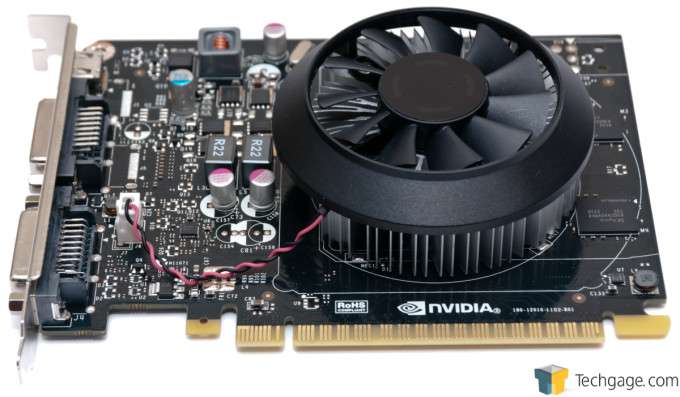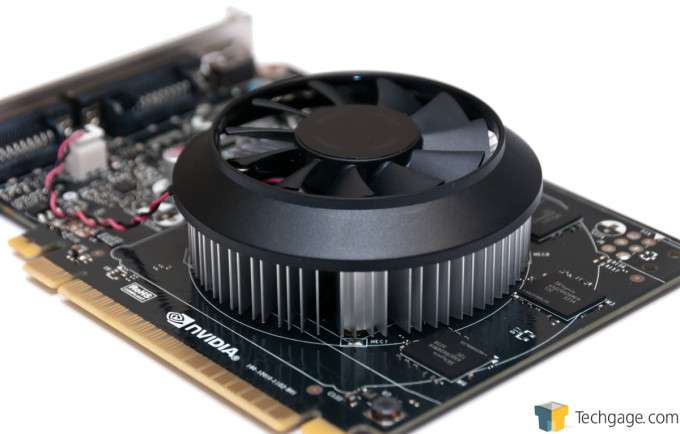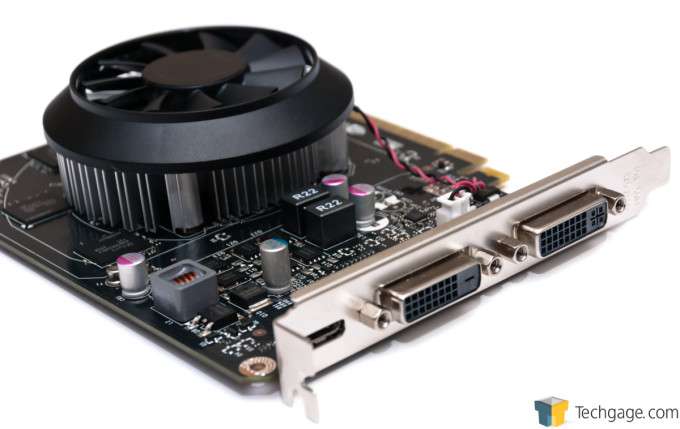- Qualcomm Launches Snapdragon 4 Gen 2 Mobile Platform
- AMD Launches Ryzen PRO 7000 Series Mobile & Desktop Platform
- Intel Launches Sleek Single-Slot Arc Pro A60 Workstation Graphics Card
- NVIDIA Announces Latest Ada Lovelace Additions: GeForce RTX 4060 Ti & RTX 4060
- Maxon Redshift With AMD Radeon GPU Rendering Support Now Available
NVIDIA GeForce GTX 750 Ti Review: 1080p Gaming without a Power Connector

It’s often hard to get excited about a new $149 graphics card, but NVIDIA’s GeForce GTX 750 Ti becomes one of the rare exceptions. For starters, it doesn’t require a power connector, and it has half the TDP requirement of its nearest competitor – all despite promised performance improvements. What more can be said? Read on!
Page 1 – Introduction
I’ve said it before, but it needs to be said again: AMD and NVIDIA are all about impeccable timing. A couple of weeks ago, I received an email from AMD telling me about its upcoming R7 265, which was set to replace the $150 Radeon R7 260X.
The reason for that model’s sudden existence became clear the following day when I received NVIDIA’s new $150 GeForce GTX 750 Ti in the post. Coincidence? Yep – sure.
Based on the introduction of these cards, it’s clear that both are going to compete well against each other – a point further proven by the fact that our results later will in fact show that the 750 Ti is a bit faster than the R7 260X.
I don’t have an R7 265 here to use for the sake of comparison, but at this point, I’m not sure it matters. As of the time of writing, I haven’t been able to find the model on sale anywhere, and we’re nearing the two-week mark from when the card’s embargo lifted. Meanwhile, NVIDIA’s 750 Ti appeared at e-tail not long after its announcement.
The situation surrounding the R7 265 stings a bit, because when I took at look at the R7 260 back in December, I wasn’t told that the card would be unavailable on these shores – but that happens to be the case. Why would I take a look at a graphics card that isn’t available to most of our audience? I wouldn’t – it’d be nonsensical. So now I’m wondering if we’ll see the same thing happen with the R7 265.
Nonetheless – let’s move onto less-aggravating matters, shall we?
NVIDIA’s GeForce GTX 750 Ti is being targeted at those who are running lower-end GeForces more than a generation old, such as the 550 Ti. In that comparison, NVIDIA touts its latest card as being 120% faster, and while that’s impressive in itself, moreso to me is the fact that it’s more than twice as fast at half the power draw. The 750 Ti is spec’d at 60W, whereas the 550 Ti was spec’d at 116W. The Radeon R7 260X, which was just $149 as mentioned above, is spec’d at 115W.
As simple as the 750 Ti appears to be on paper, it’s become one of the most-impressive graphics cards I’ve taken a look at in some time. Thanks to its 60W power requirement, it doesn’t require a power connector. That means those who own restrictive OEM PCs don’t need to fuss about not having an available power connector, and those that do have one can simply enjoy the fact that the 750 Ti is laughing at it.
On the topic of laughing, that was the reaction I had when I first received the 750 Ti and took it out of its box. “Ti”, to me, suggests a beefier-than-normal graphics card, but just look at this. I had figured NVIDIA sent me over an unannounced GeForce GT 720 by accident. But no. We might be looking at a simple card here, but it’s not so simple when put into action.
The reason the 750 Ti’s cooler is so simple is that it’s all that’s needed. This strikes me as humorous because this cooler design cannot be purchased; instead, vendors like EVGA, ASUS, ZOTAC and so forth all offer much beefier-looking coolers, which will seem a little odd given this simple reference cooler prevented the card from exceeding 66°C during our stress-test.
The reference 750 Ti includes dual DVI ports along with a mini-HDMI, but that doesn’t matter too much: As always, vendors can pick and choose what to include. One ASUS model, for example, offers dual DVI ports, a regular-sized HDMI port, and VGA.
| NVIDIA GeForce Series | Cores | Core MHz | Memory | Mem MHz | Mem Bus | TDP |
| GeForce GTX Titan Black | 2880 | 889 | 6144MB | 7000 | 384-bit | 250W |
| GeForce GTX Titan | 2688 | 837 | 6144MB | 6008 | 384-bit | 250W |
| GeForce GTX 780 Ti | 2880 | 875 | 3072MB | 7000 | 384-bit | 250W |
| GeForce GTX 780 | 2304 | 863 | 3072MB | 6008 | 384-bit | 250W |
| GeForce GTX 770 | 1536 | 1046 | 2048MB | 7010 | 256-bit | 230W |
| GeForce GTX 760 | 1152 | 980 | 2048MB | 6008 | 256-bit | 170W |
| GeForce GTX 750 Ti | 640 | 1020 | 2048MB | 5400 | 128-bit | 60W |
| GeForce GTX 750 | 512 | 1020 | 2048MB | 5000 | 128-bit | 55W |
| GeForce GTX 660 | 960 | 980 | 2048MB | 6000 | 192-bit | 140W |
| GeForce GTX 650 | 384 | 1058 | 1024MB | 5000 | 128-bit | 64W |
NVIDIA might be focusing on the GTX 750 Ti at the moment, but it’s also launched a non-Ti model as well. As seen in the chart above, that card has 20% of the cores cut, and 100MHz taken off of the memory clock. These small changes decrease the card’s cost from $150 to about $120.
As mentioned above, I don’t have an R7 265 to compare the 750 Ti to, which is unfortunate since it’s a direct match-up. But as also mentioned, that card remains unavailable for purchase, so for our testing, I’m instead going to compare it to the previous $150 AMD card, the Radeon R7 260X (which is now available for $120).
Onward we go.
Support our efforts! With ad revenue at an all-time low for written websites, we're relying more than ever on reader support to help us continue putting so much effort into this type of content. You can support us by becoming a Patron, or by using our Amazon shopping affiliate links listed through our articles. Thanks for your support!








